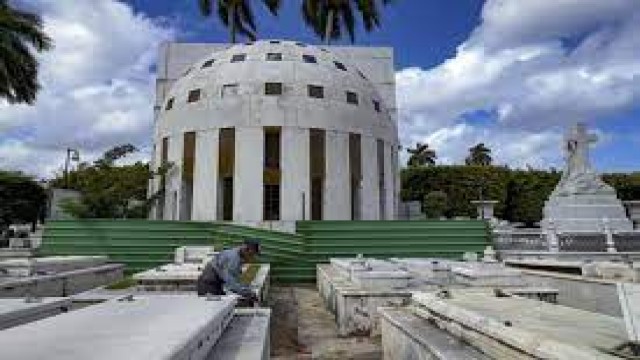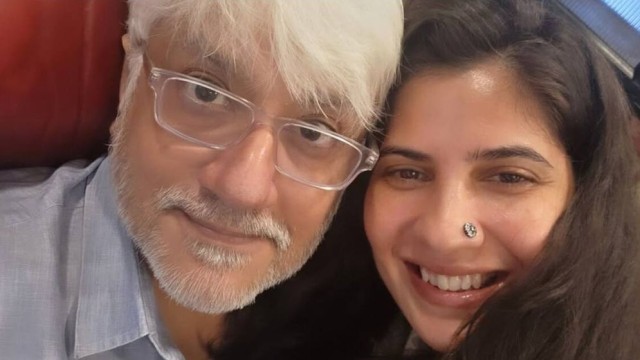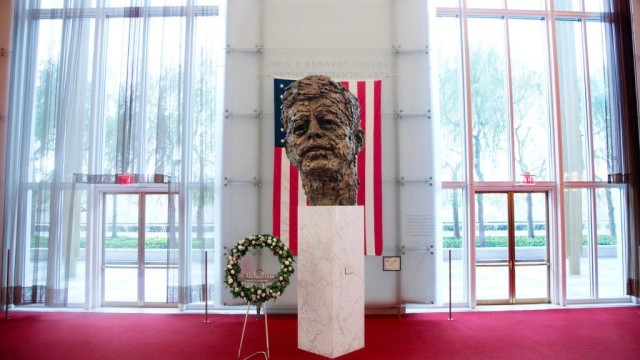When it came to constructing the massive marble grave of his one true love at Havana's Colon cemetery—an unexpected storehouse of former passions—Cuban sugar billionaire Juan Pedro Baro spared no money.
Baro's extramarital affair with Cataline Lasa, one of the most stunning women in Cuba, caused controversy among the upper classes. However, her legacy endures in the opulent details of her Art Deco tomb. Cataline Lasa passed away in 1930.
The 66-year-old singer-songwriter Mario Darias, who has penned multiple books on the Havana graveyard, which was established in 1876 and spans over 50 hectares (120 acres) in the center of the city, stated, "The cemetery is full of love stories." The cemetery, which has the last resting places of great authors, artists, painters, and physicians as well as freedom heroes, is regarded as an outdoor museum because to its intricate sculptures and architecture.
However, it's also a location where loves—some unexpected, some concealed, some foiled—are memorialized.
One of the most well-known love tales in Cuba is symbolized by Lasa's mausoleum.
When the aristocratic beauty first laid eyes on Baro, she was already married to the vice president of Cuba's son.
"High society took sides in this matter and turned their backs on them," Darias said.
Following their flight, the two lovers settled in Paris until 1917, when Pope Benedict XV approved their plea to have Lasa's marriage revoked. The two went back to Havana, where they resided until Lasa became sick and passed away at the age of 55.
Currently undergoing renovation, her tomb is composed of black granite and white marble, with glass flowers created by French glassmaker Rene Lalique, who passed away in 1945, atop it.
- An astonishing age disparity-
The tombs of two other lovers—a teacher and a pupil who were thirty years apart—that caused controversy in their day are located elsewhere.
The sculptured busts of Modesto Canto (1890–1977) and his considerably younger wife Margarita Pacheco (1920–1959) are placed in a tomb with the inscription "united by eternal love."
"A lot of people didn't like their connection. Darias stated, "Everyone predicted she would become a widow very soon, but she passed away first. Nearby is the grave of Amelia Goyri, who was buried with her unborn child on her legs in accordance with tradition after she passed away in 1901 at the age of twenty-four, eight months pregnant.
Her grieving spouse initiated an ardent commitment to her grave, causing a ripple effect of contagious passion, leading other cemetery patrons to pause and offer their condolences.
She was immortalized in a two-meter-tall white marble monument, but the real legend began in 1914, when she became known as "La Milagrosa," the miracle one.
There are reports that she was found entire, holding her infant in her arms, when her tomb was uncovered that year. Ever then, Cubans have traveled to her tomb to lay offerings and make wishes for good fortune in a variety of areas, including conceiving or protecting a child, health, and exams.
Leticia Mojarrieta, 56, is aware of this love tale and follows the custom of Goyri's husband, who visited her cemetery for forty years, of never turning around to face the sculpture.
She is requesting protection for her pregnant daughter-in-law, who just immigrated to the US.
"We found some liquid in the infant's chest. She told AFP, "I came to ask for help" from La Milagrosa.
End//voice7news.tv






























Comment: